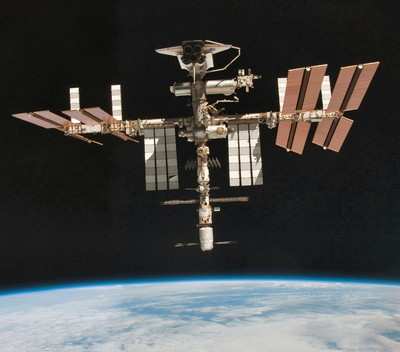Wed, Mar 07, 2018
Will Address Seven Priority Areas Where Technology Compatibility Is Needed
In order to maximize investment in, and benefits of, future deep space exploration platforms and technologies, NASA and its International Space Station partners have collaborated to draft standards that address seven priority areas in which technology compatibility is crucial for global cooperation.

The agency and its partners are seeking feedback on these draft interoperability standards, which cover: avionics, communications, environmental control and life support systems, power systems, rendezvous operations, robotics, and thermal systems. This standardization effort aims to support commonality without dictating design features beyond the interfaces that allow hardware systems to operate with each other.
"Contributions from the global community will improve the quality of the interoperability standards and help enable development of the systems necessary to meet global exploration goals," said William Gerstenmaier, associate administrator for NASA's Human Exploration and Operations Mission Directorate. "Having compatible hardware will allow differing designs to operate with each other. This could allow for crew rescue missions and support from any spacecraft built to these standards."
The goal is to provide a final, baseline version of the standards in the summer 2018 timeframe. The first potential application of these standard may be the Lunar Orbital Platform-Gateway, NASA's lunar outpost that will extend human presence in deep space. However, the standards are meant to be applicable to all deep space environments.
These interoperability standards will build upon the successful global collaboration that went into developing the International Docking System Standard – the standard used for the International Space Station – which provides a path for government and commercial entities alike to develop a docking system compatible with others.
(Source: NASA new release. Image from file)
More News
Also: Netherlands Donates 18 F16s, 2 737s Collide On Ramp, E-7 Wedgetail Cut, AgEagle's 100th In S Korea The Pilot and Aircraft Privacy Act was introduced in the House by Represent>[...]
Pilot Also Reported That Due To A Fuel Leak, The Auxiliary Fuel Tanks Were Not Used On June 4, 2025, at 13:41 eastern daylight time, a Piper PA-23, N2109P, was substantially damage>[...]
Have A Story That NEEDS To Be Featured On Aero-News? Here’s How To Submit A Story To Our Team Some of the greatest new stories ANN has ever covered have been submitted by our>[...]
From 2023 (YouTube Edition): Reflections on War’s Collective Lessons and Cyclical Nature The exigencies of war ought be colorblind. Inane social-constructs the likes of racis>[...]
What Goes Around, May Yet Come Back Around, Klyde FMI: www.klydemorris.com>[...]
 Airborne 06.30.25: US v ADS-B Misuse, Natl STOL Fire, Volocopter Resumes
Airborne 06.30.25: US v ADS-B Misuse, Natl STOL Fire, Volocopter Resumes NTSB Prelim: Piper PA-23
NTSB Prelim: Piper PA-23 ANN FAQ: Submit a News Story!
ANN FAQ: Submit a News Story! Classic Aero-TV: One Mans Vietnam
Classic Aero-TV: One Mans Vietnam Klyde Morris (06.30.25)
Klyde Morris (06.30.25)



